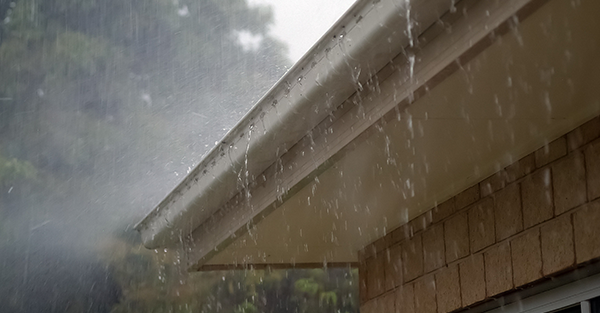
You should be able to rely on your roof regardless of the weather, but it’s also important that you’re prepared for anything that comes your way. With strong winds, heavy rainfall, and blistering sunlight, roofs in the Midwest have a lot to withstand. Today, you’ll learn about some of the most common roofing problems in the region and how you can stay protected.
1. My Roof Is Leaking
Leaking is one of the most notable roofing problems, and it’s a problem that can quickly spread beyond just your roof. The leak can drip down into your walls and attic, and it may eventually turn into mold if it's not dealt with quickly. Plus, a severe leak may compromise your roof’s integrity, which can lead to a partial or even full collapse.
Leaking happens for a variety of reasons, and not all of them have to do with heavy rainfall. Even the lightest rain can affect a roof that was improperly installed or not taken care of over the years. Unfortunately, one of the most common signs of leaking is a wet spot on your ceiling, but by then, the damage is already done. This is why it’s crucial that you have your roof inspected and repaired after major storms and on a regular basis.
2. Blown Off Shingles

Shingles can blow off during heavy winds. Even with the best construction, the force of strong winds may damage your roof's integrity. When this happens, your home is vulnerable to further damage due to water infiltration. While severe enough weather can damage even the strongest roofs, one of the best preventive measures is to have your roof inspected and constructed by a reputable company to ensure it remains as intact as possible.
3. Heat Blistering on the Roof
Whether from strong sunlight, poor construction, or aging, your roof may be exposed to heat-related blistering. This occurs when small pockets of air start to expand between your shingles and its adhesives. This generally happens in the warmer months when the sun is out in full force. While a small blister is usually not problematic, large or numerous blisters may affect the integrity of your roof.
As the blister expands, more water and air is allowed underneath the shingle, which then causes further expansion! If the cycle continues, it can lead to leaks, gaps, and mold growth. Luckily, heat blistering can be spotted quickly by a professional, and they will know whether it needs urgent repair or is simply an aesthetic problem.
4. My Gutters Are Clogged
After a strong storm, it’s not uncommon to find numerous leaves, sticks, and other debris scattered inside your gutters. Don't wait for it to be flushed out naturally. If the blockage is severe, water can overflow and cause damage to both your roof and your home's foundation.
Despite all of nature’s mischief, one of the greatest problems for roof is shoddy construction that leaves your roof vulnerable to damage. Your roof should be built to can stand strong against the elements for many years to come.
With Hedrick Construction, you have licensed roofing contractors always by your side. We serve Des Moines, Ames, and the surrounding areas. Whether you’re in need of a repair or an entire new roof, we can help. Contact Hedrick Construction today!








Comments